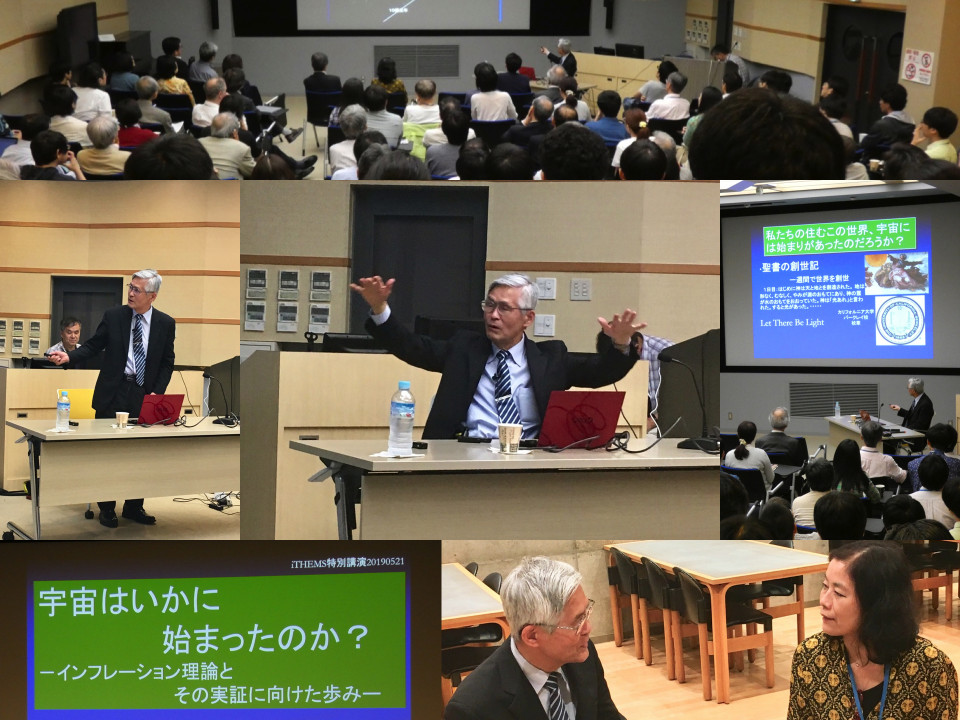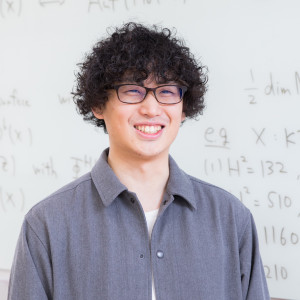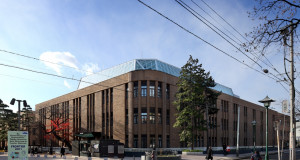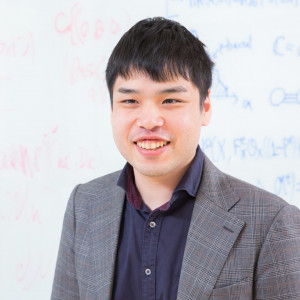Volume 54
Back to Newsletter List
Seminar Report
Report of iTHEMS Special Lecture – How did the Universe Begin? -Inflation Theory & Road to the Proof-
2019-05-23
On May 21st, iTHEMS Special Lecture by Dr. Katsuhiko Sato (Professor Emeritus, The University of Tokyo / Director, Research Center for Science Systems, Japan Society for the Promotion of Science) was given at Okochi Hall for more than 100 participants. Dr. Katsuhiko Sato is well known as a scientist who discovered the inflation mechanism of the early Universe in 1981. In the special lecture, Dr. Katsuhiko Sato gave an introduction about the expansion of the universe, mysteries about uniformity & isotropy of the universe, and absense of monopoles. Then Dr. Katsuhiko Sato explained how he got an idea of the inflation mechanism, motivated by Spontaneous-Symmetry-Breaking (SSB) mechanism (SSB was proposed by Dr. Yoichiro Nambu), and explained how these problems are solved by the Inflation mechanism. Dr. Katsuhiko Sato introduced about future missions that will prove firmly the inflation mechanism, including LiteBIRD that will measure B-mode in the polarization of cosmic microwave background in the universe. It was a great coincidence that JAXA announced on the same day, May 21st, that JAXA has made a decision to launch LiteBIRD. We wish the Inflation mechanism proposed by Dr. Katsuhiko Sato will be proved firmly in the near future.
How did the Universe Begin? -Inflation Theory & Road to the Proof-
May 21 (Tue) 15:00 - 16:30, 2019
Upcoming Events
Lecture
First M87 Event Horizon Telescope Results: The Shadow of the Supermassive Black Hole
May 24 (Fri) 14:00 - 15:00, 2019
Yosuke Mizuno (Frankfurt University, Germany)
The Event Horizon Telescope (EHT) has mapped the central compact radio source of the elliptical galaxy M87 at 1.3 mm with unprecedented angular resolution. These images show a prominent ring with a diameter of ~40 micro-arcsecond, consistent with the size and shape of the lensed photon orbit encircling the “shadow” of a supermassive black hole. The ring is persistent across four observing nights and shows enhanced brightness in the south. Here we consider the physical implications of the asymmetric ring seen in the 2017 EHT data. To this end, we construct a large library of models based on general relativistic magnetohydrodynamic simulations and synthetic images produced by general relativistic ray tracing. We compare the observed visibilities with this library and confirm that the asymmetric ring is consistent with earlier predictions of strong gravitational lensing of synchrotron emission from a hot plasma orbiting near the black hole event horizon. Overall, the observed image is consistent with expectations for the shadow of a spinning Kerr black hole as predicted by general relativity. If the black hole spin and M87’s large scale jet are aligned, then the black hole spin vector is pointed away from Earth. Models in our library of non-spinning black holes are inconsistent with the observations as they do not produce sufficiently powerful jets. We also briefly discuss the possibility of the alternatives to a black hole for the central compact object.
Venue: #435-437, Main Research Building, RIKEN Wako Campus
Event Official Language: English
Seminar
iTHEMS Math Seminar
Certain invariants as dimension
May 24 (Fri) 16:00 - 18:10, 2019
Genki Ouchi (Special Postdoctoral Researcher, RIKEN Interdisciplinary Theoretical and Mathematical Sciences Program (iTHEMS))
Plan of the seminar: we separate each talk into two. In the first 60 minutes the speaker gives an introductory talk for non-mathematicians. After a short break, the second 60 minutes is spent for a bit more detailed talk for mathematicians (working in other areas). We welcome you joining both parts of the seminar or only the first/second half.
Abstract: In this talk, I would like to talk about certain invariants that look like dimension. This talk has independent two parts.
In part 1, I will talk about finite metric spaces. In 2013, Leinster introduced the notion of magnitude of finite metric spaces. It measures effective number of points in finite metric spaces. Considering magnitude and scale transformation, Leinster and Willerton defined dimension of finite metric space with scale. I will explain the definition of magnitude of finite metric spaces and see examples.
In part 2, I will talk about derived categories of smooth projective varieties or finite dimensional algebras. In 2014, Dimitrov, Heiden, Katzarkov and Kontsevich introduced the notion of entropy of endofunctors of derived categories. It measures complexity of endofunctors under iteration. Serre functor is an autoequivalence of derived category, that describes Serre duality. Entropy of Serre functor looks like dimension of derived categories. I will talk about known results for entropy of Serre functors and some related topics.
Venue: Seminar Room #160, 1F Main Research Building, RIKEN
Event Official Language: English
School
g-RIPS Sendai 2019
June 17 (Mon) - August 9 (Fri) 2019
GRIPS (Graduate-level Research in Industrial Projects for Students)-Sendai program was held last summer (June 18 - Aug. 10, 2018) with the support of iTHEMS as well as other institutions and companies. Two industrial projects were launched under the suggestion of TOYOTA and NEC, and two teams composed of US and Japanese students have worked intensively to find solutions of these problems. See for the details of the GRIPS program and the summary of activities at GRIPS-Sendai 2018.
This year, GRIPS-Sendai program will be held from June 17 through Aug. 9, 2019 with a larger scale under the support of iTHEMS. Stay tuned for further information.
Event Official Language: English
Workshop
Workshop on Sine-square deformation and related topics 2019
July 11 (Thu) 10:00 - 18:00, 2019
Person of the Week
Self-introduction: Keita Mikami
2019-05-18
I am Keita Mikami, a research scientist at iTHEMS. My research field is partial differential equations and I work on linear Schrödinger equation. Main subject in the research of linear Schrödinger equation is its spectrum.
I have studied localization in direction phenomena of Schrödinger operators with homogeneous potentials of order zero. Roughly speaking, this is a phenomena such that a solution to Schrödinger equation with this class of potentials localizes in direction as time goes to infinity. I have used spectral theory and semiclassical(microlocal) analysis to understand this phenomena and its application.
Though my interest comes from mathematics, I want to understand physical aspects of Schrödinger equations and find some application of my results in physics since Schrödinger equation is the governing equation in quantum mechanics.
If you would like to cancel your subscription or change your email address,
please let us know via our contact form.
Copyright © iTHEMS, RIKEN. All rights reserved.






